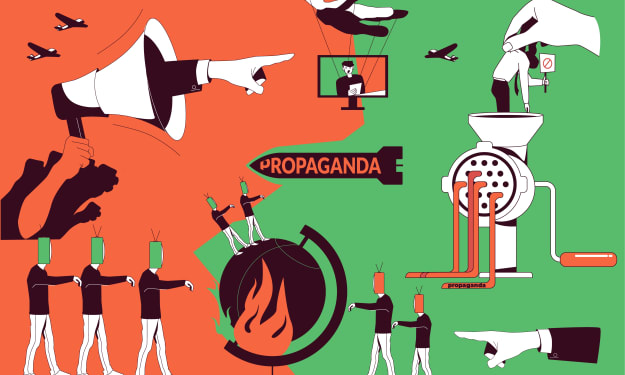Getting Sponsors for Your Social Media
What You Need to Know
In recent years, social media has become a powerful platform for promoting brands and products, and it's no secret that influencers are playing a huge role in this trend. For those with a significant following, securing sponsorship deals can be a lucrative way to earn money through their social media profiles. However, getting sponsorship deals isn't always easy. In this article, we'll provide a detailed tutorial on how to get sponsors for your social media profiles, including the necessary steps to take to make it happen.
Step 1: Build a Strong Following
The first step to securing sponsorships is to build a strong following on your social media profiles. Brands are looking to partner with influencers who have a large following and a high engagement rate. While there is no set number of followers required to attract sponsorships, you'll need to have a sizable audience to make it worthwhile for brands to partner with you. You can start by identifying your niche and creating content that resonates with your target audience. This could be anything from fashion, beauty, food, fitness, travel, or any other niche that you're passionate about.
Once you've identified your niche, it's essential to stay consistent in your content creation and post regularly. You should also engage with your followers by responding to comments and direct messages, running contests, and collaborating with other influencers in your niche. By building a loyal following, you'll be more attractive to brands looking to partner with influencers in your niche.
Step 2: Create a Media Kit
A media kit is a document that contains information about your social media profiles, including your reach, engagement rate, demographics, and examples of your content. It's essentially a pitch deck that you'll use to showcase your value to brands looking to partner with influencers. Your media kit should be visually appealing and include high-quality images and graphics.
When creating your media kit, start by including an introduction that summarizes who you are, what you do, and the type of content you create. Next, provide an overview of your social media profiles, including your follower count, engagement rate, and demographics. You should also include examples of your content, such as screenshots of your most popular posts or links to your blog or YouTube channel.
Finally, include information on the types of sponsorships you're open to, such as sponsored posts, product reviews, or brand collaborations. Be sure to include your contact information, including your email address and social media handles, so brands can easily get in touch with you.
Step 3: Research Brands and Reach Out
Once you've built a strong following and created a media kit, it's time to start reaching out to brands. Start by researching brands in your niche that you're interested in partnering with. Look for brands that align with your values and the type of content you create. You can use social media platforms, such as Instagram, to identify brands that are already working with influencers in your niche.
Once you've identified the brands, you're interested in working with, reach out to them directly via email or through their website's contact form. Be sure to personalize your outreach email and explain why you're interested in working with their brand. Include your media kit as an attachment and highlight the value you can provide as an influencer. Be sure to follow up with the brand if you don't hear back from them after a week or so.
Step 4: Be Transparent and Follow FTC Guidelines
When working with brands, it's essential to be transparent about your sponsorship deals with your followers. The Federal Trade Commission (FTC) requires influencers to disclose any sponsored content they post on their social media profiles. Failure to disclose sponsored content could result in legal action or fines.
When posting sponsored content, be sure to use the hashtag #ad or #sponsored to indicate that the post is sponsored. You can also add a disclaimer to your post, such as "This post is sponsored by [brand name]" or "I received [product or service] from [brand name] in exchange for this post." It's important to be transparent with your followers to maintain their trust and credibility.
Step 5: Negotiate and Set Clear Expectations
When negotiating with brands, it's important to set clear expectations and deliverables for the sponsorship deal. This includes the type of content you'll create, the number of posts, the timeline for posting, and the compensation you'll receive. Be sure to negotiate a fair price that reflects the value you'll provide as an influencer. You can use your media kit to showcase your reach and engagement rate to justify your pricing.
Once you've agreed on the terms, be sure to put everything in writing in a contract. This will help avoid any misunderstandings or disputes down the line. The contract should include the details of the sponsorship deal, the compensation, and any other terms or conditions agreed upon by both parties.
Step 6: Deliver High-Quality Content
When working with brands, it's important to deliver high-quality content that aligns with their brand and messaging. Be sure to follow the guidelines provided by the brand, such as using specific hashtags or mentioning certain products in your post. Make sure your content is authentic and aligns with your personal brand as an influencer. You want to maintain your credibility with your followers and avoid being seen as "selling out" to brands.
Step 7: Evaluate the Results
After completing a sponsorship deal, it's important to evaluate the results and measure the return on investment (ROI) for both you and the brand. This includes analyzing the engagement rate, reach, and other metrics of the sponsored posts. Use this information to improve your future sponsored content and showcase the value you can provide to brands.
Conclusion
In conclusion, getting sponsors for your social media profiles requires building a strong following, creating a media kit, researching brands, being transparent and following FTC guidelines, negotiating and setting clear expectations, delivering high-quality content, and evaluating the results. By following these steps, you can attract sponsorship deals that align with your personal brand and provide value to both you and the brand. Remember to stay authentic and true to yourself as an influencer and maintain your credibility with your followers.
About the Creator
Timothy A Rowland
I’m an every day human Xennial from the United States. I have many interest. I just want to improve your life and maybe entertain you. Available for editing and LeadsLeap projects at: https://www.fiverr.com/greyhatcompany
Enjoyed the story? Support the Creator.
Subscribe for free to receive all their stories in your feed. You could also pledge your support or give them a one-off tip, letting them know you appreciate their work.







Comments
There are no comments for this story
Be the first to respond and start the conversation.